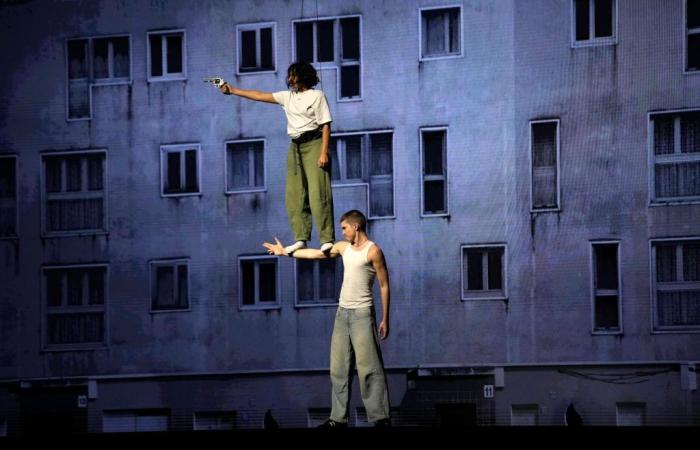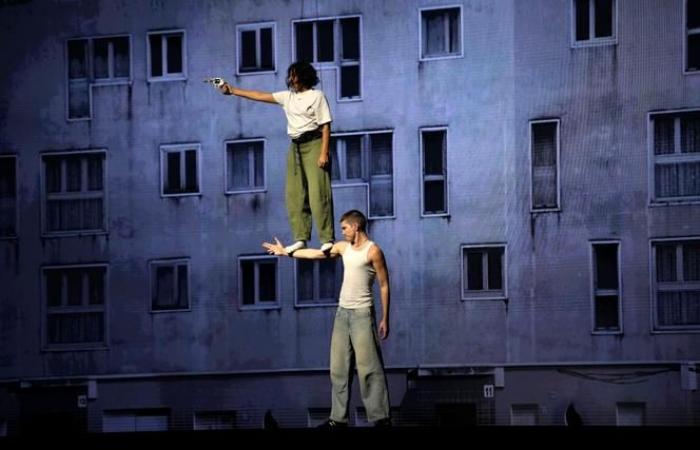The audience at La Seine musicale in Boulogne-Billancourt (Hauts-de-Seine) did not really know what to expect this Thursday, October 10 for the premiere of the musical Hate. How can we transcribe on stage the urgency of this cult film from the 1990s, directed by Mathieu Kassovitz and shot in black and white? How can we not appear, thirty years later, anachronistic in a society where new technologies are disrupting everyday life?
Certainly, as the subtitle of the show underlines, “So far nothing has changed”, the themes of the film are still omnipresent in the news: police blunders, the violent response to urban riots, the feeling of exclusion of populations in the periphery, and that of the downgrading of police officers. How can you manage to give spectators a good time with such a heavy subject? Three young people from the city, Saïd, Hubert and Vince, wander through their neighborhood and in Paris after a night of rioting with the weapon that a police officer lost. Against all expectations, the musical gives a real facelift to the film, and its new actors almost make Vincent Cassel and Saïd Taghmaoui forget.
The two directors, Mathieu Kassovitz and Serge Denoncourt, were not content to string together the fifteen sketches of the film, they modernized them, revitalized them, notably with the choreographies of Emilie Capel and Yaman Okur, and added scenes like this confrontation of hip-hop dances (break, krump, house) between girls and boys with this scathing reply from Saïd’s little sister (“It’s not 1995 anymore, you don’t tell me when I should come back or not. »)
Chaos
Another strong moment that the director added to the musical: the romantic exchange with the tough guy Vince and his veiled sweetheart who wants to see him leave the city and its violence. Disconcerted by the casual and dangerous attitude of her companion, she staggers. Her dizziness, her uneasiness and her desire to rise above her neighborhood in the midst of chaos are first described by the text of the rapper Doria but especially by the latter’s acrobatic number. She moves in front of a video installation by Canadian scenographers and image creators Silent Partners Studio. Throughout the hour and a half of the show, their technical discoveries steal the show from the actors.
Read the interview (2023): Article reserved for our subscribers Mathieu Kassovitz: “I want to make “La Haine”, a political show like “Hair” or “Starmania””
Add to your selections
The setting of the City of Poets in Chanteloup-les-Vignes (Yvelines), where the film was shot, is still there but their images offer it new light and depth. The decrepit and gray facades become almost beautiful. The city passes in panorama while the three main characters walk on a treadmill, giving the sensation that the spectators are moving at the same time as them. Already seen in the show Fiq! from the Tangier Acrobatic Group, the iPhone replaces Vince’s mirror, or the rearview mirror in the scene of the car that the three boys want to steal. A riot advances inexorably to the sound of Song of the Partisans.
You have 20.35% of this article left to read. The rest is reserved for subscribers.







